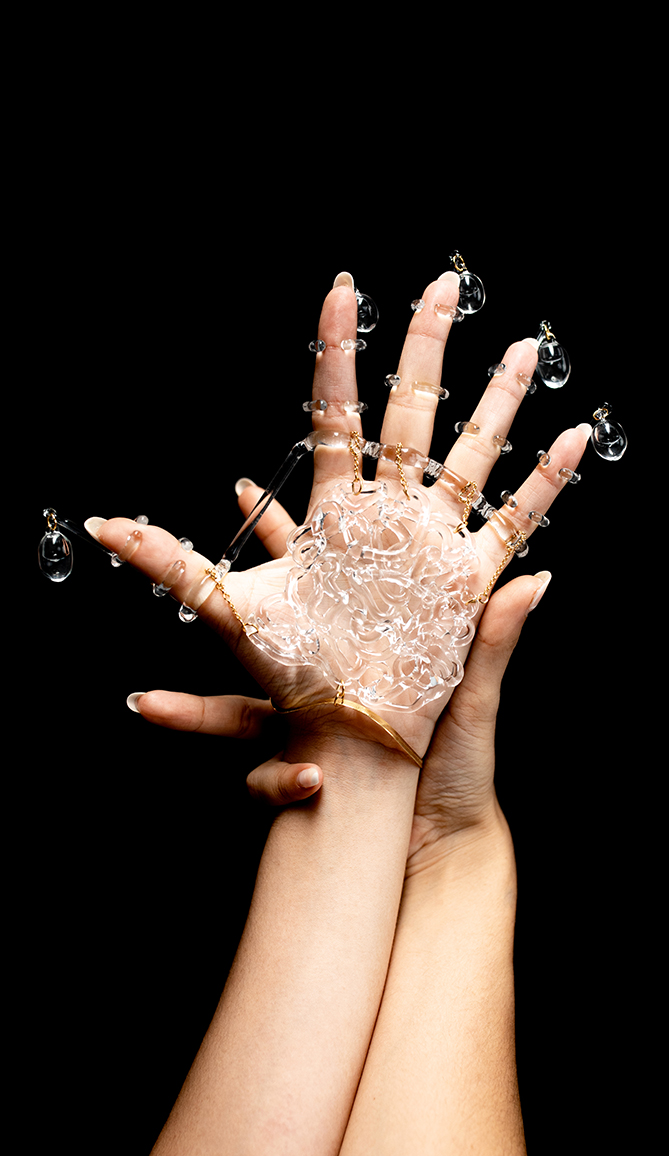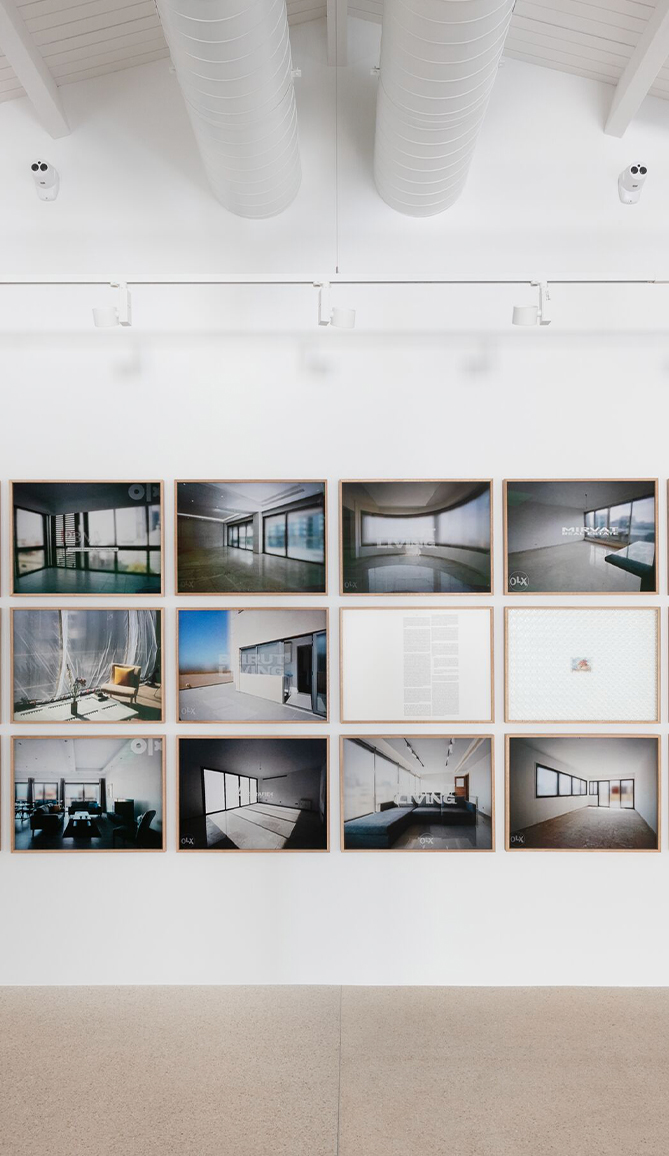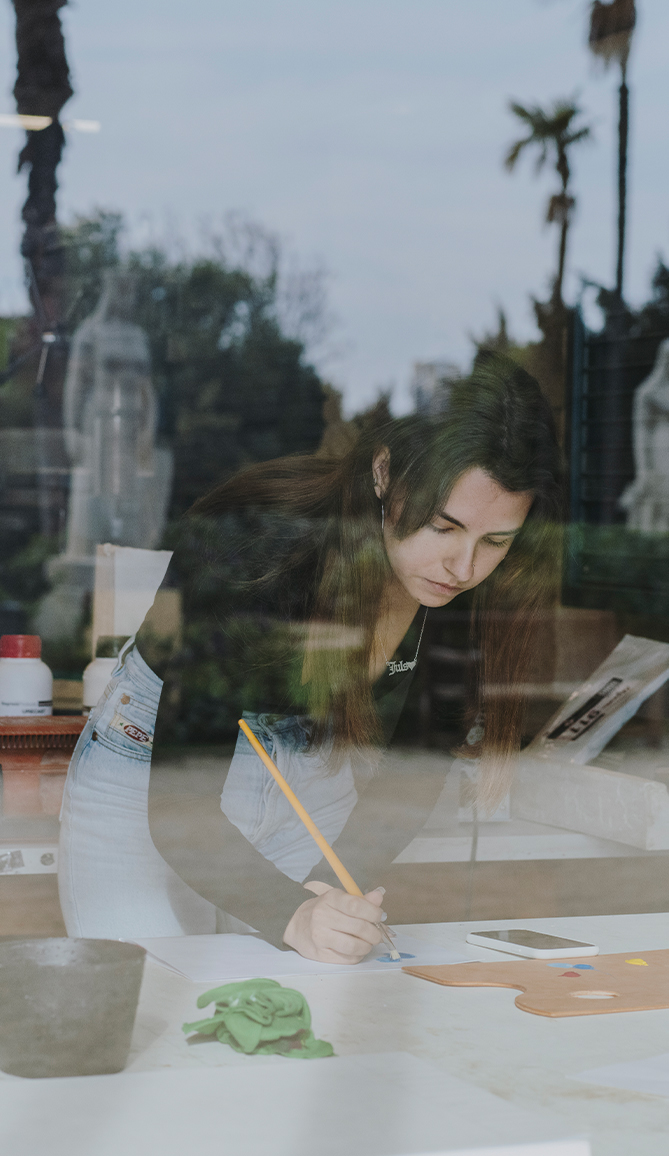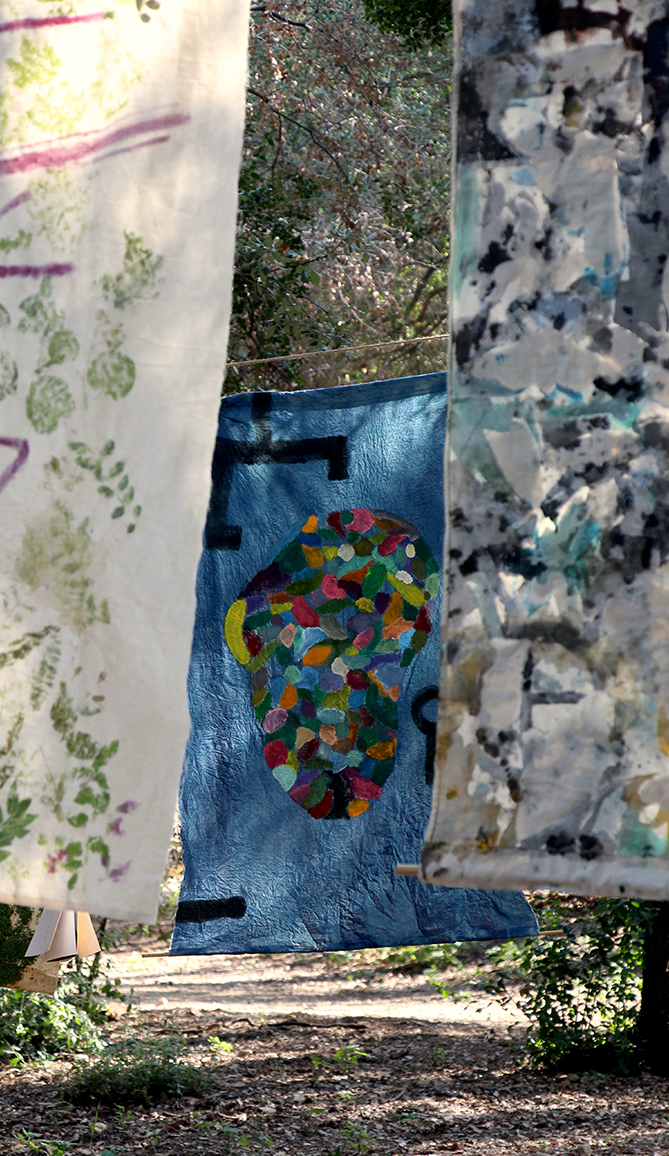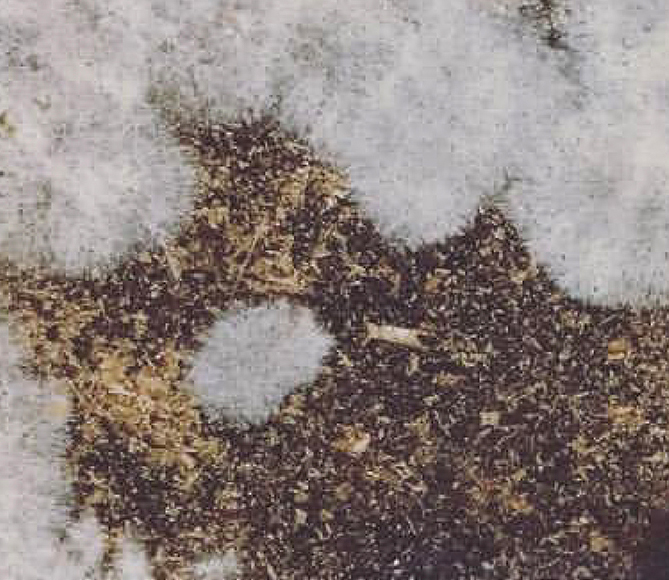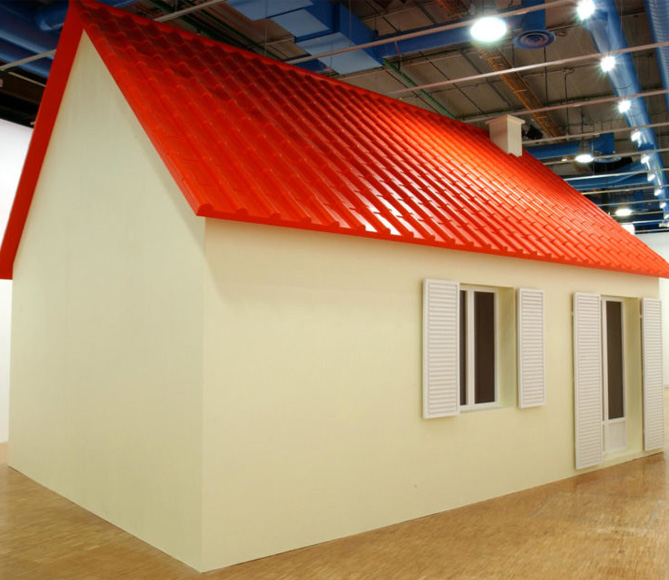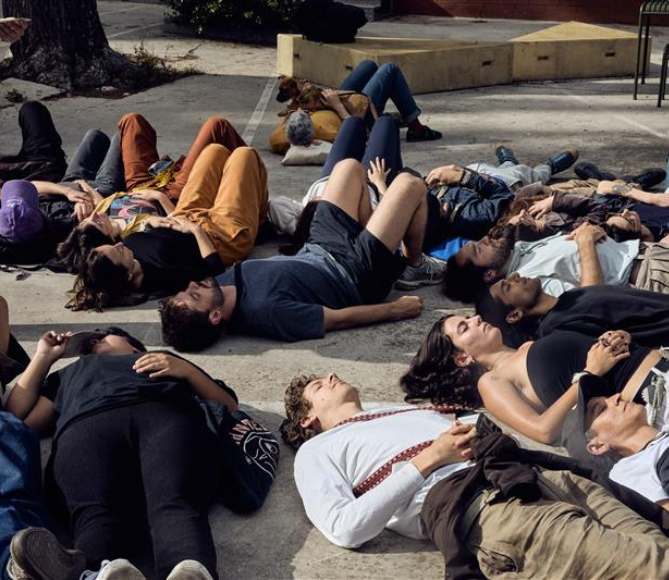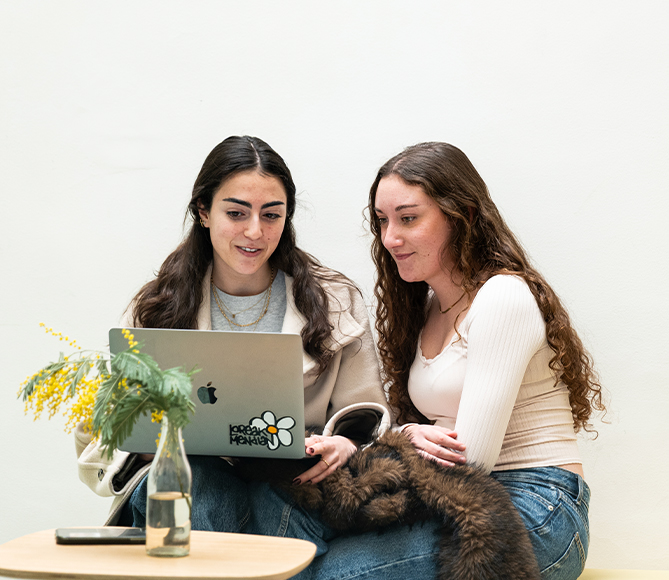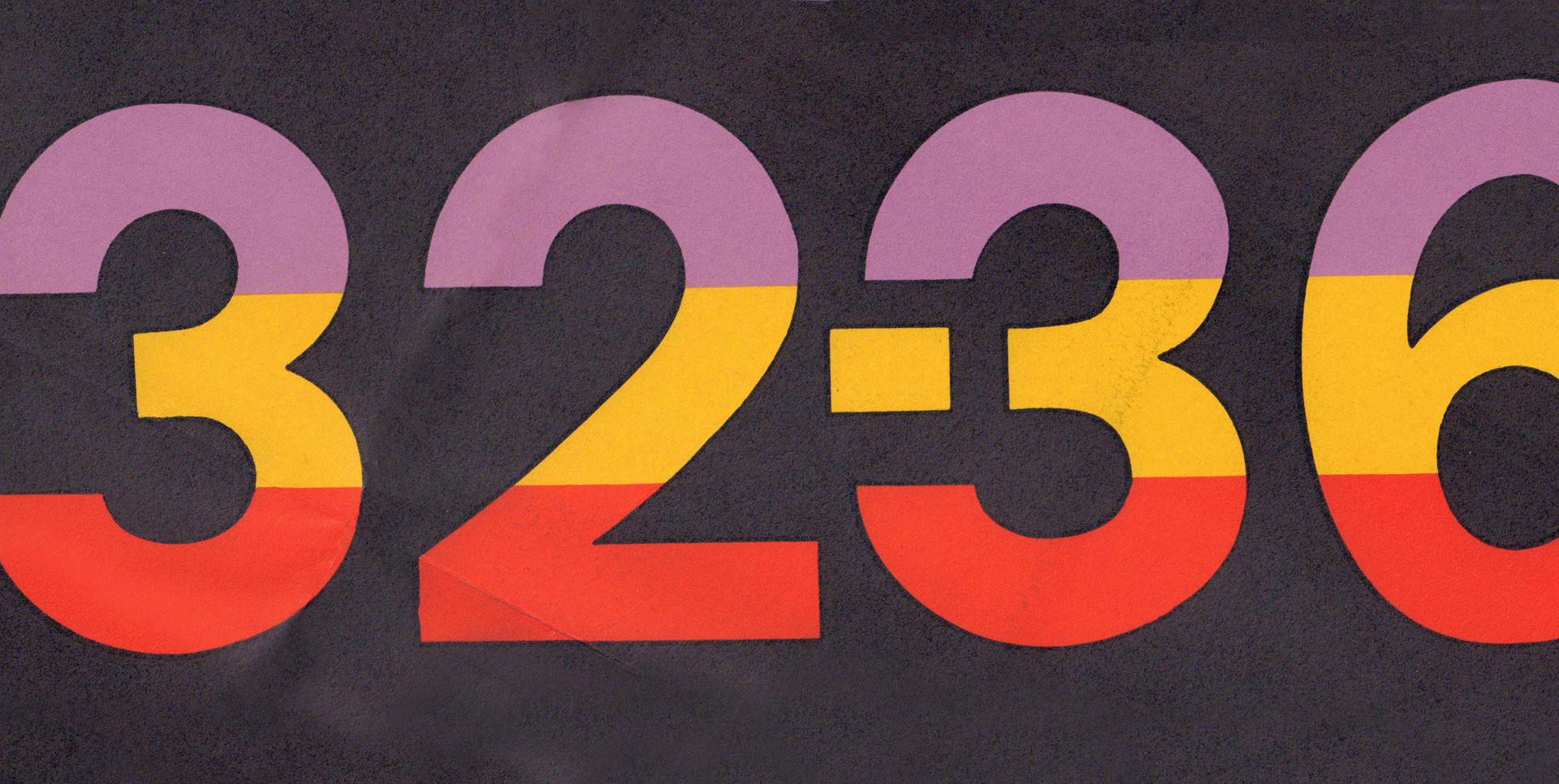The exhibition ADLAN and testimonies from the ‘32 – ‘36 era, commissioned by the Catalan Architects Association from EINA, was held between February and March 1970 at the Association’s headquarters on Plaça Nova in Barcelona.
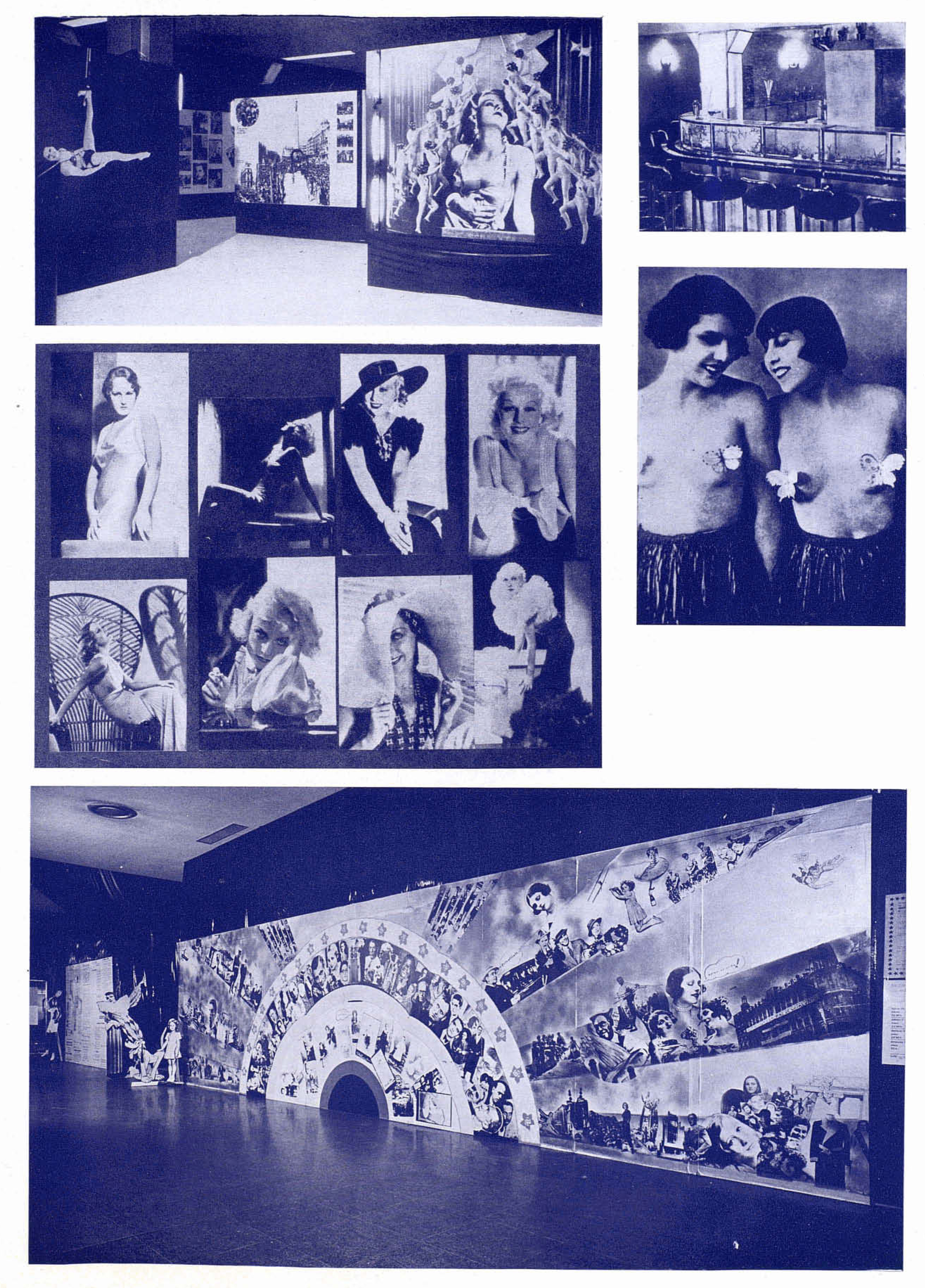
Cuadernos de arquitectura. Nº 79 (1970)
The ADLAN (Amics De L'Art Nou – Friends of New Art) group was created in Barcelona in 1932. Its origins go back to an early 1930s gathering at the Hotel Colon in Barcelona, attended by individuals such as Lluís Montanyà, Josep Lluís Sert (the most active member of the GATCPAC – the Catalan Architects and Experts Group to Advance Contemporary Architecture), Robert Gerhard, Magí A. Cassanyes, Sebastià Gasch, Joaquim Gomis, Àngel Ferran, Carles Sindreu, J.V. Foix, Salvador Dalí, Joan Prats, and Federico García Lorca on occasion as well. Adelita Llop acted as secretary and treasurer.
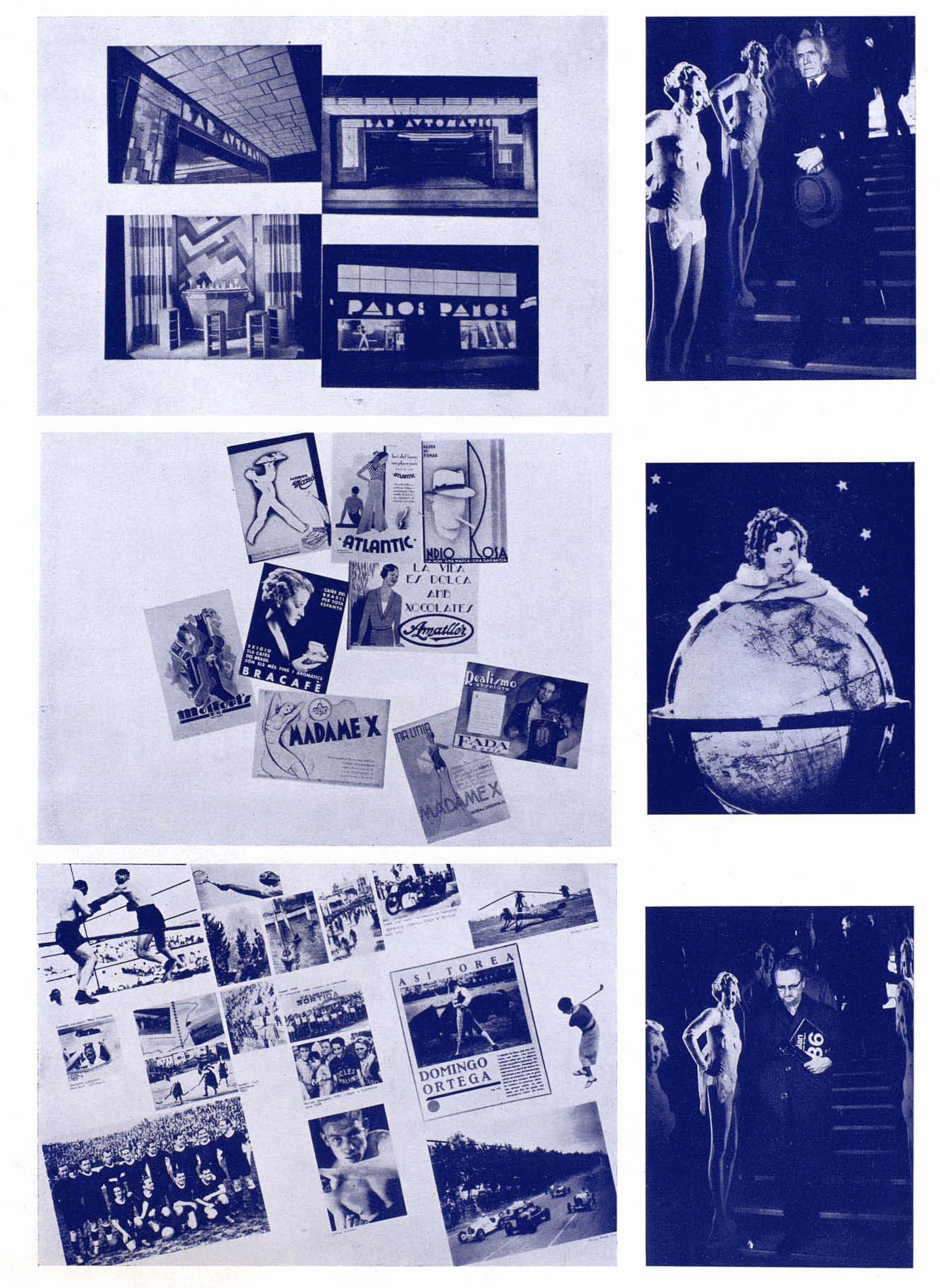
Cuadernos de arquitectura. Nº 79 (1970)
The ADLAN, which maintained a close relationship with the GATCPAC, included not only architects, but was also joined by members of Catalan civil society, liberal professionals, tradesmen, and businessmen who organized over fifty events across various disciplines: jazz, dance, circus performances, photography, architecture, and, above all, art with exhibitions dedicated to artists such as Calder, Man Ray, Hans Arp, Remedios Varo, Miró, Picasso, and Dalí, as well as the sculptors Jaume Sans, Ramon Marinel·lo, and Eudald Serra. The group's events were held at sites such as Galeries Syra, Catalonia, and Joieria Roca in Barcelona.
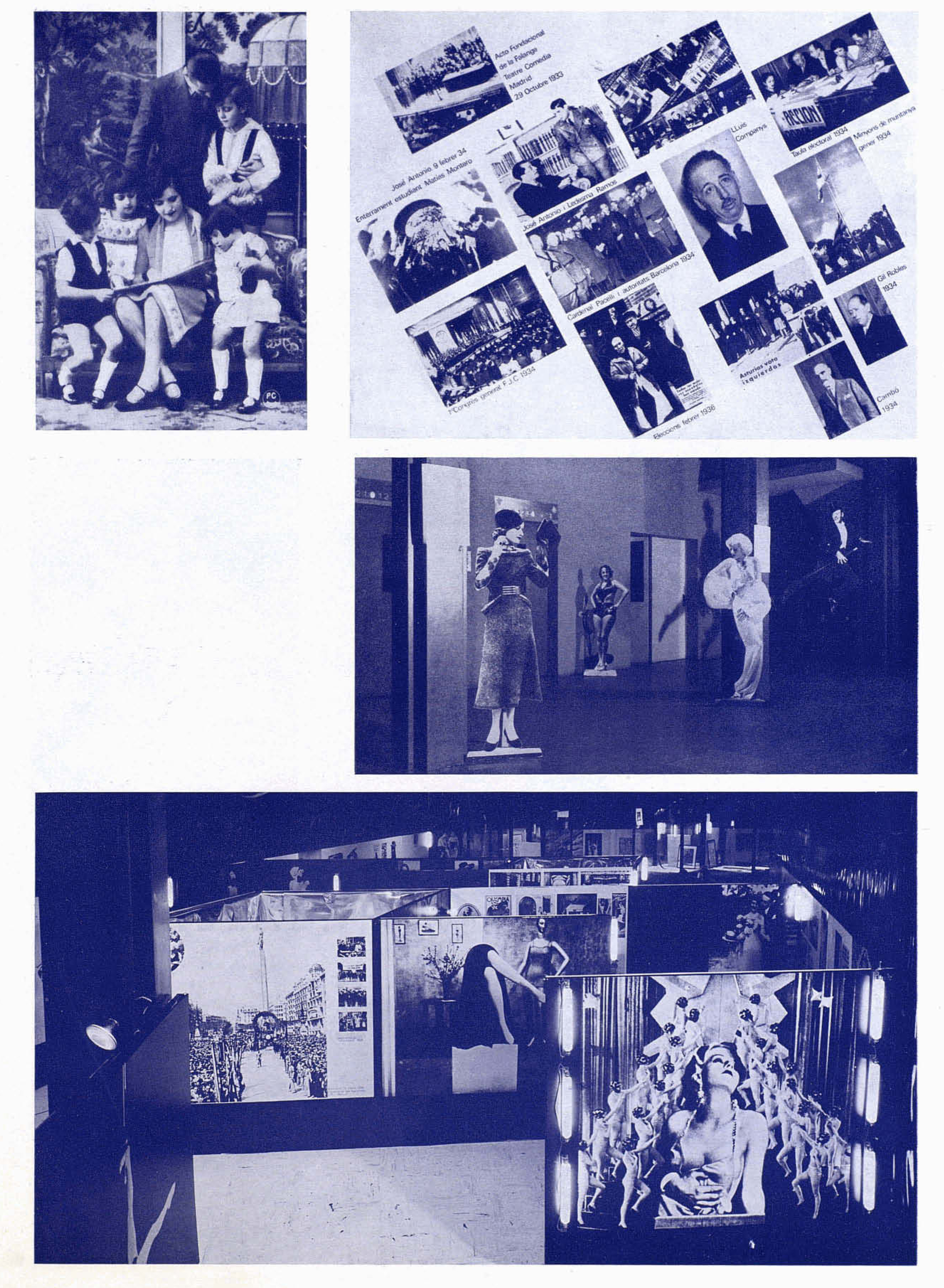
Cuadernos de arquitectura. Nº 79 (1970)
According to Cesario Rodriguez-Aguilera (cita ), Joan Prats proposed founding a "Snobs Club" group and remarked that, over the centuries, snobs had been invaluable patrons of the arts, because if snobs automatically welcome any sort of novelty, and therefore anything that is unusual or that could cause a scandal. This meant that snobs represented a valuable bulwark against the fossilization of art and pedantry. But, as Prats was notorious for behaving with a good deal of levity, the decision was made to adopt the name "Friends of New Art".
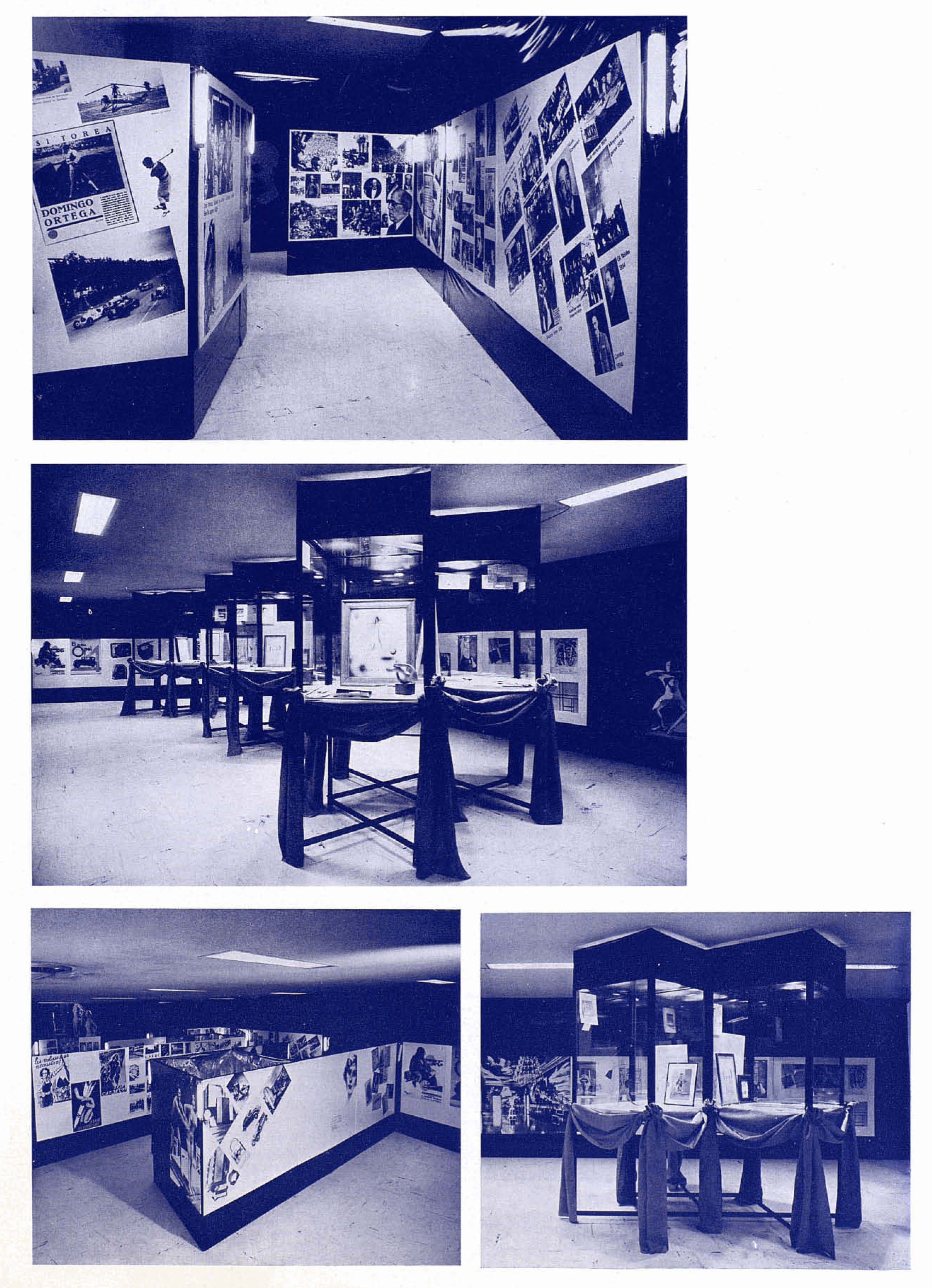
Cuadernos de arquitectura. Nº 79 (1970)
Few original works were available for their exhibitions. The exhibit also aimed to reflect the group’s desire to bring light to the latest trends in contemporary art right at the time of its creation, but without renouncing a certain elitism that made its social implications evident at the same time.
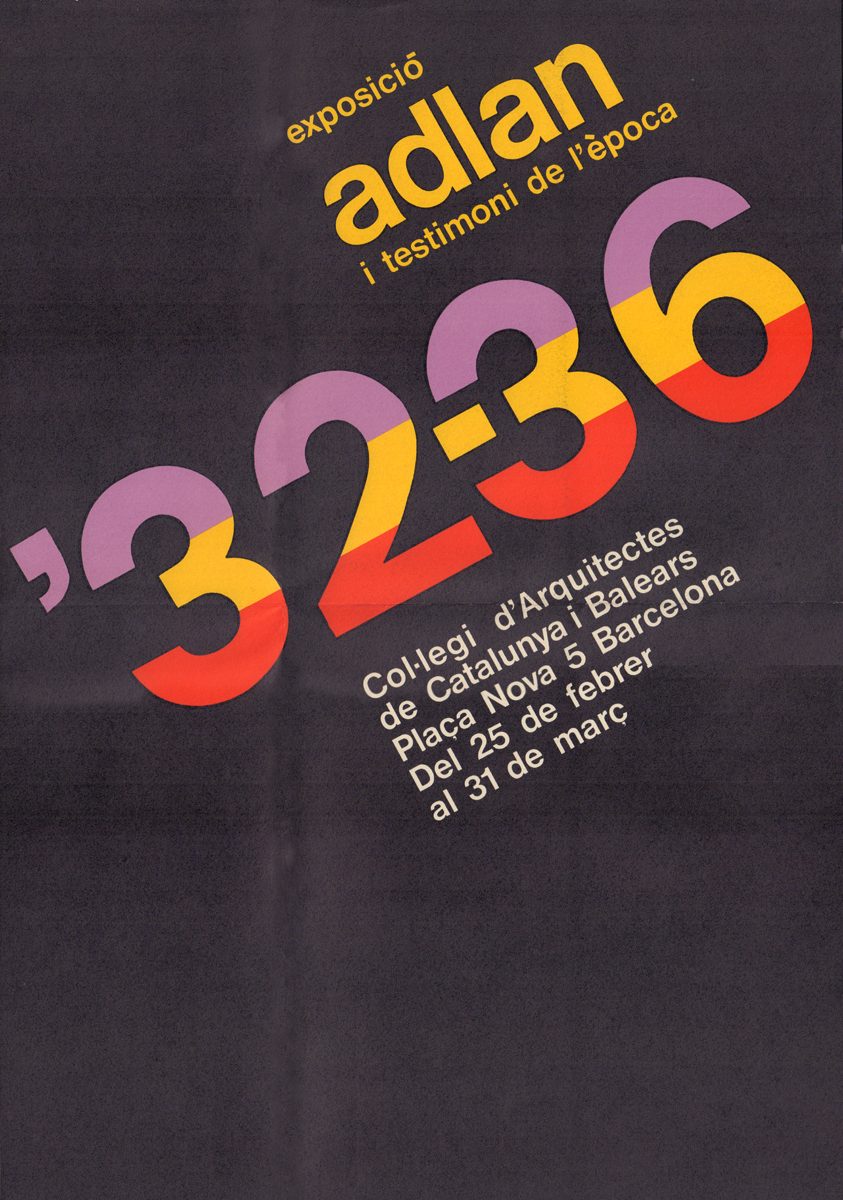
The poster/catalogue is a piece by Paco Llobet, then a student at EINA. This piece was selected from among all the works done in the Graphic Design Projects class taught by Yves Zimmermann.
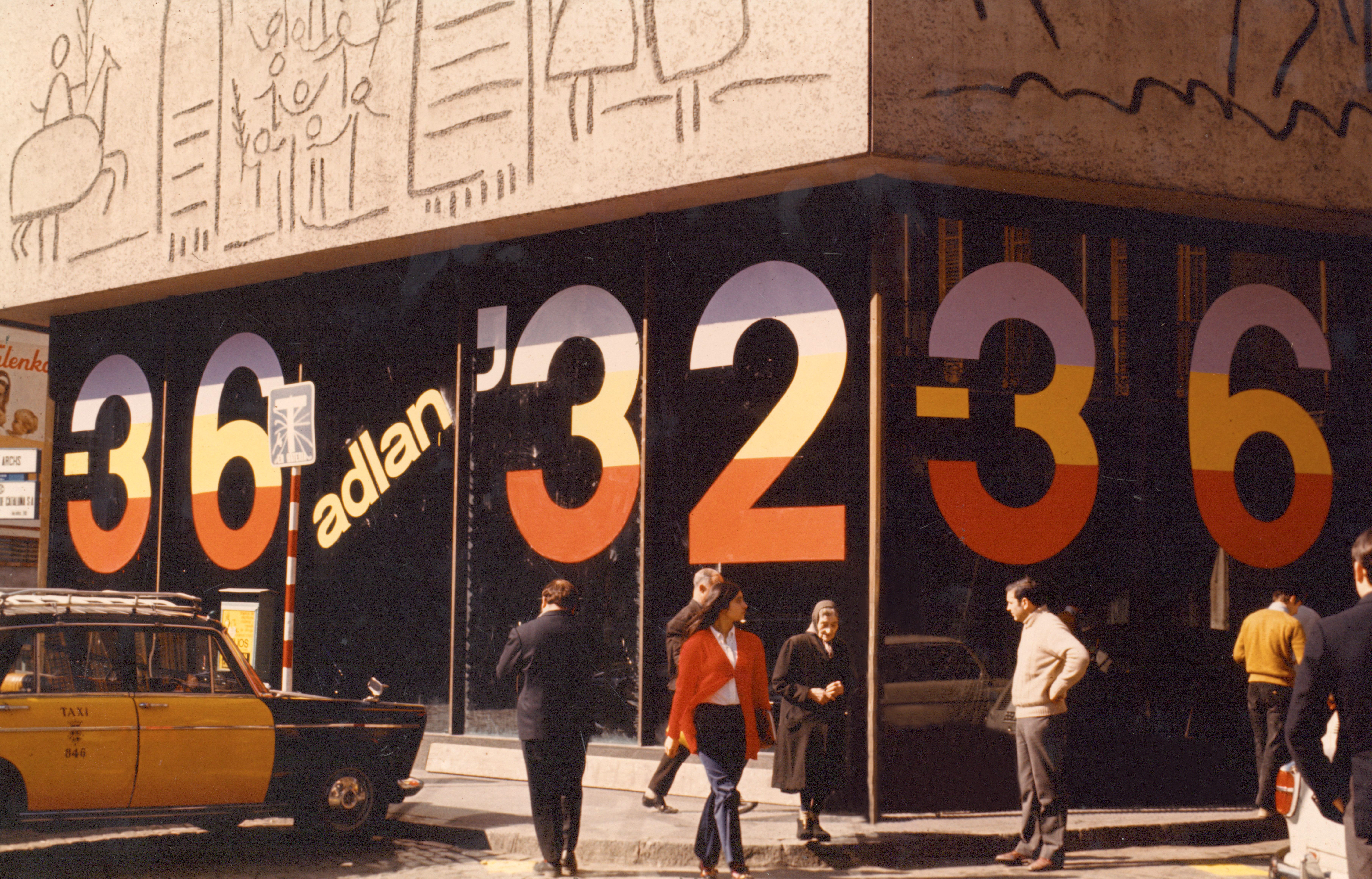
The numbers '32 – '36 were printed out with the colours of the Republican flag and plastered onto the three facades of the Architects Association headquarters, up to a considerable size of about two metres in height. We believe it was the first time since the post-war period that the Republican flag had been so publicly and ostentatiously displayed.
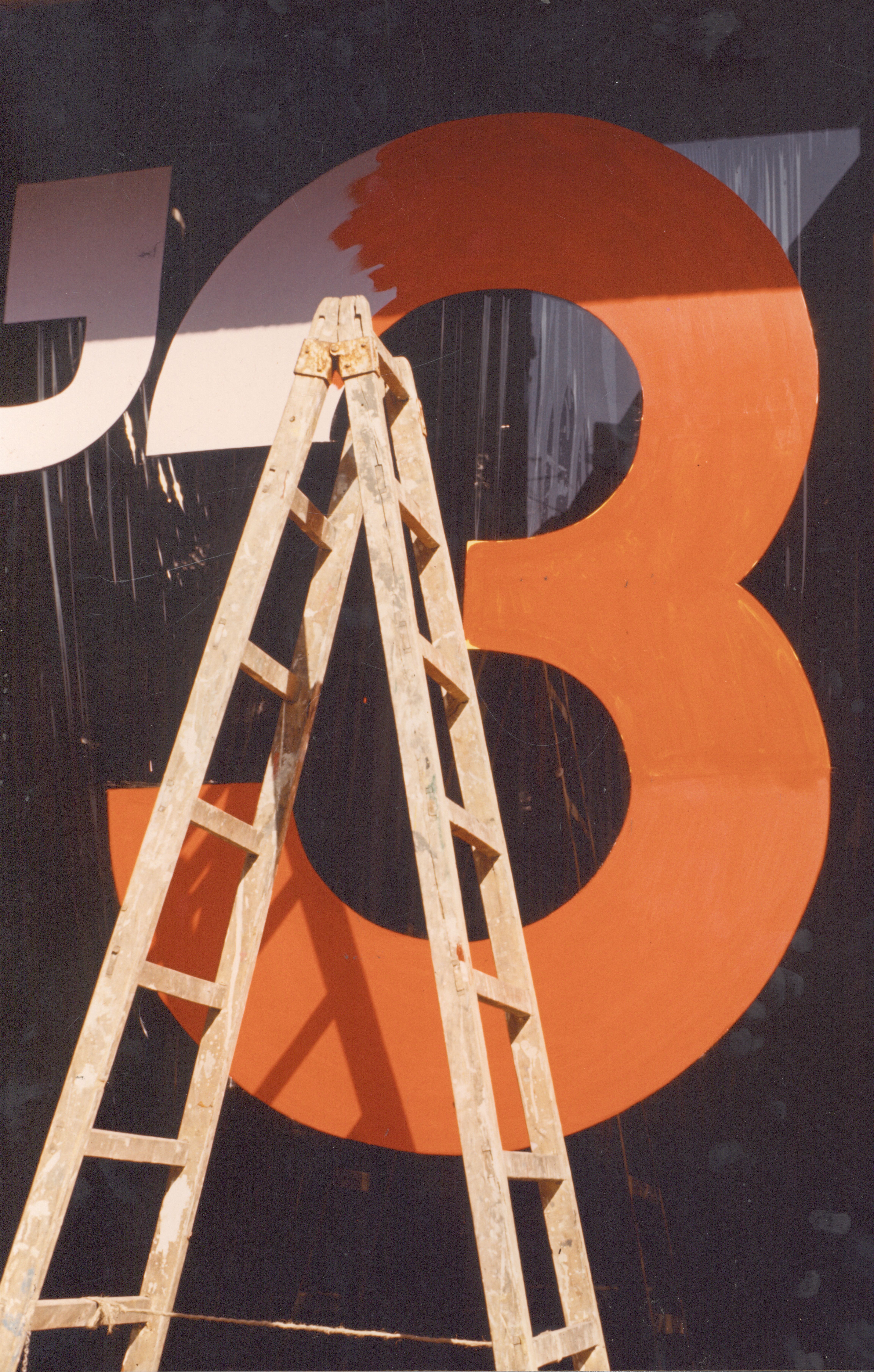
A few days before the opening of the exhibition, a far-right wing Spanish paramilitary group called the Warriors of Christ the King made threats about breaking the windows of the facade if the flags were not removed. At that point, the decision was made to repaint the numbers completely red. By dragging this action along for as many days as possible, it ended up transforming into a performance in its own right.
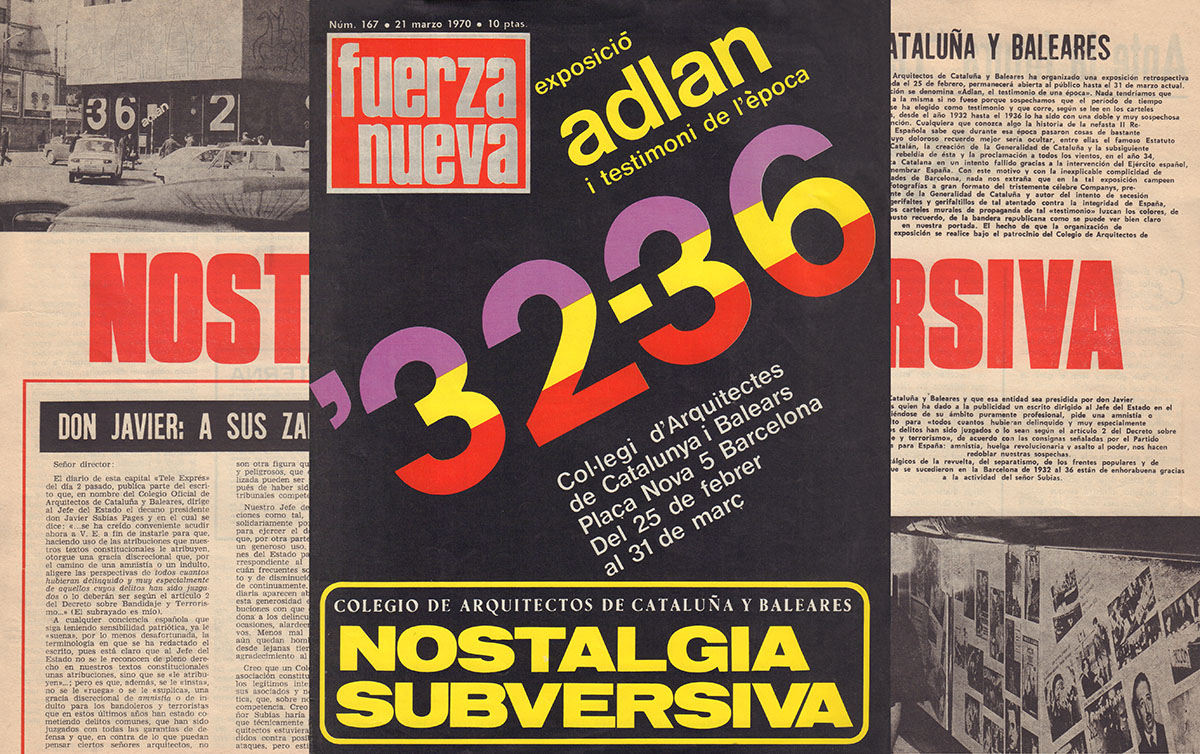
Paradoxically, all the newsstands in Barcelona showed the cover of the far-right magazine Fuerza Nueva, which reproduced the exhibition’s poster featuring the Republican flag and dedicated several interior pages to the exhibition.
A fundamental item in the exhibit that radically transformed the space was the black plastic curtains, creating a box to isolate the interior from views from the street and unifying the three exhibition spaces: lobby, mezzanine, and first floor.
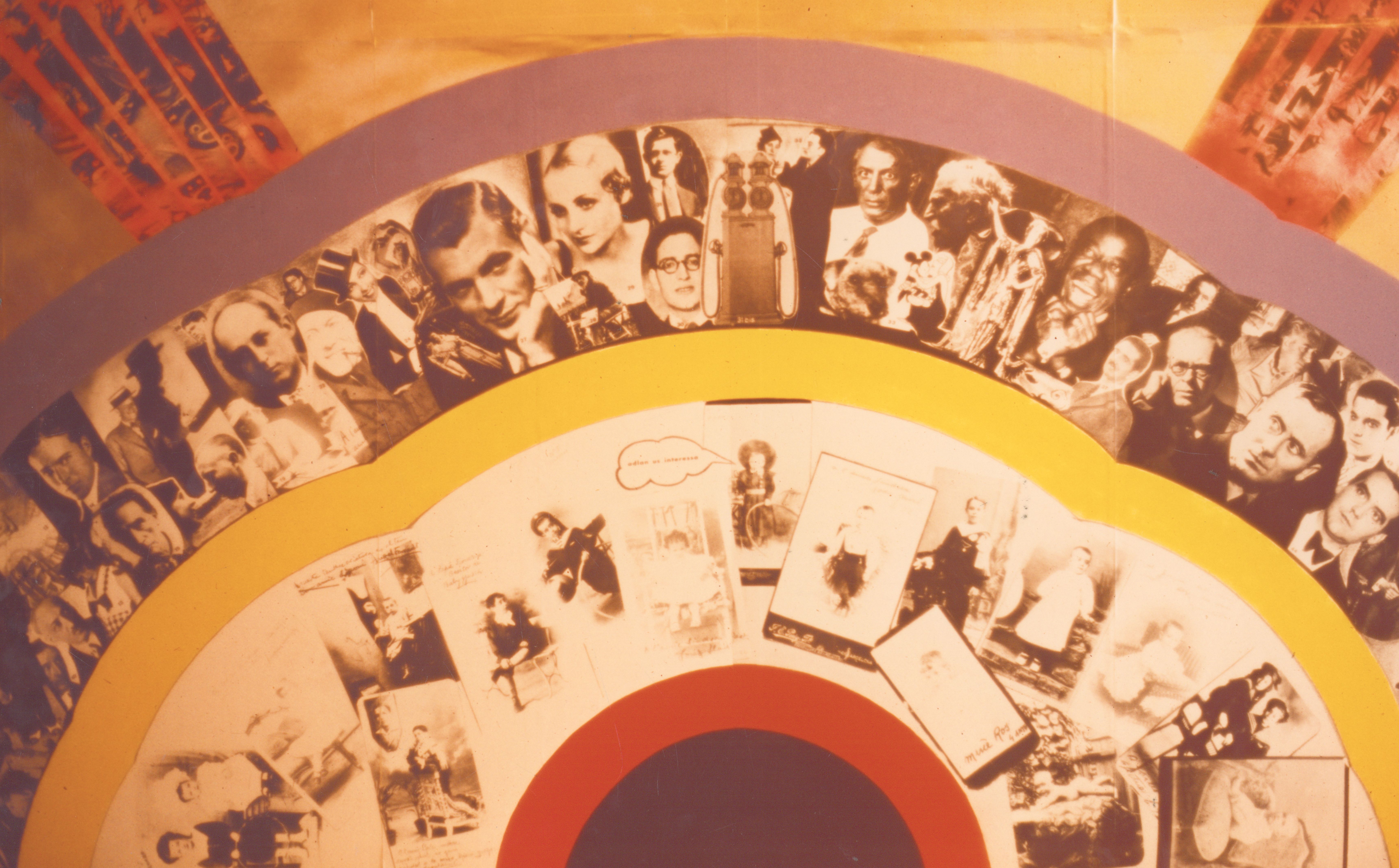
In the lobby, a large photographic collage with Art Deco aesthetics occupied nearly the entire hall. The central core showcased portraits of ADLAN's founders when they were babies, surrounded by concentric semicircles with the colours of the Republican flag and portraits of friendly artists, politicians, and celebrities of the time.
Fred Astaire welcomed visitors to the hall, jumping without taking off his top hat. He danced alone without Ginger Rogers. Pluto played with Shirley Temple. Tarzan searched for the monkey Chita. Greta Garbo was hiding. Betty Boop showed off her garter and Jean Harlow was wearing a ponytail.
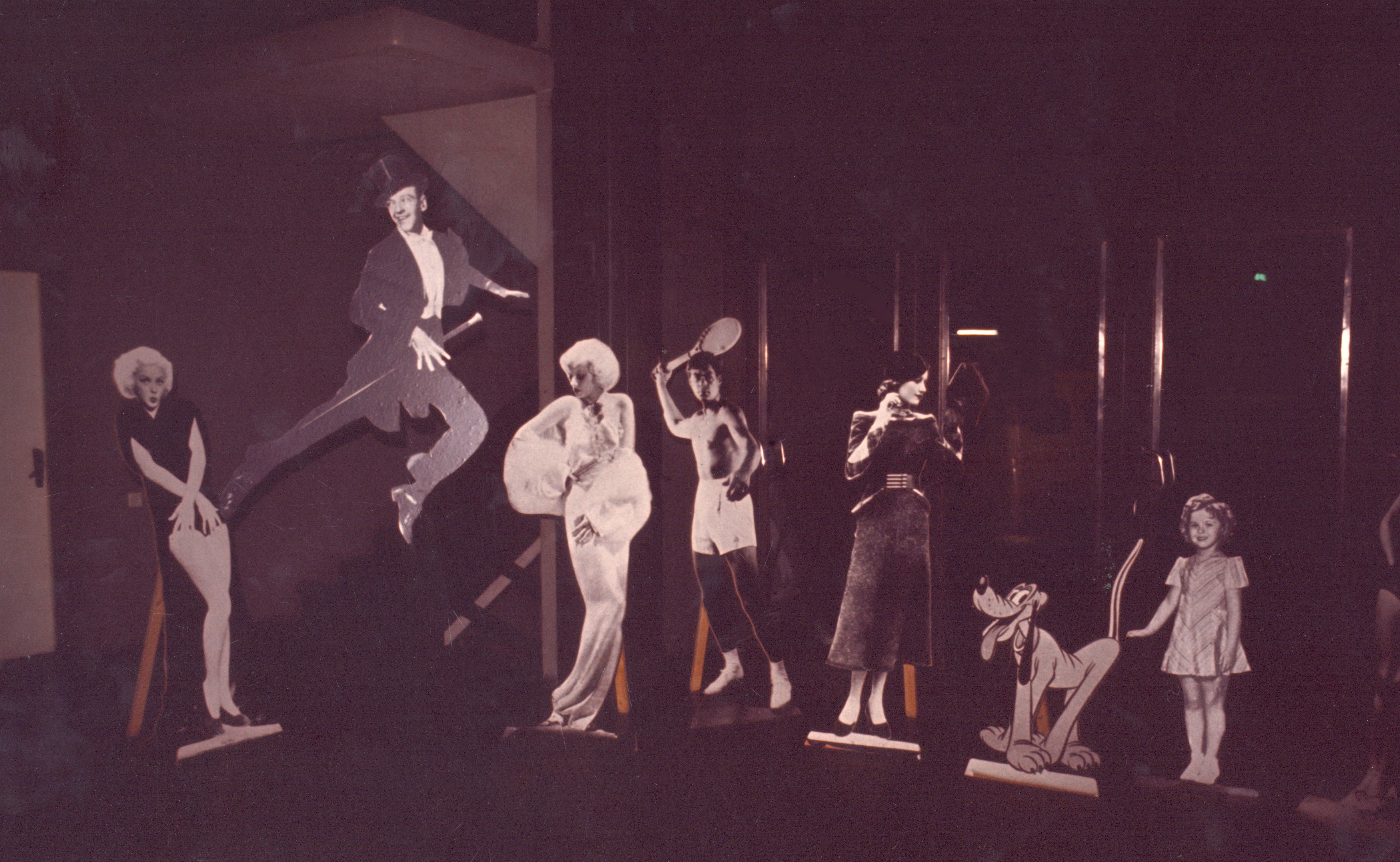
On the day of the inauguration, censorship became evident. While an orchestra was performing, Albert Ràfols Casamada and other collaborators painted a flower vine on the spot to cover the purple colour of the Republican flag on the mural.
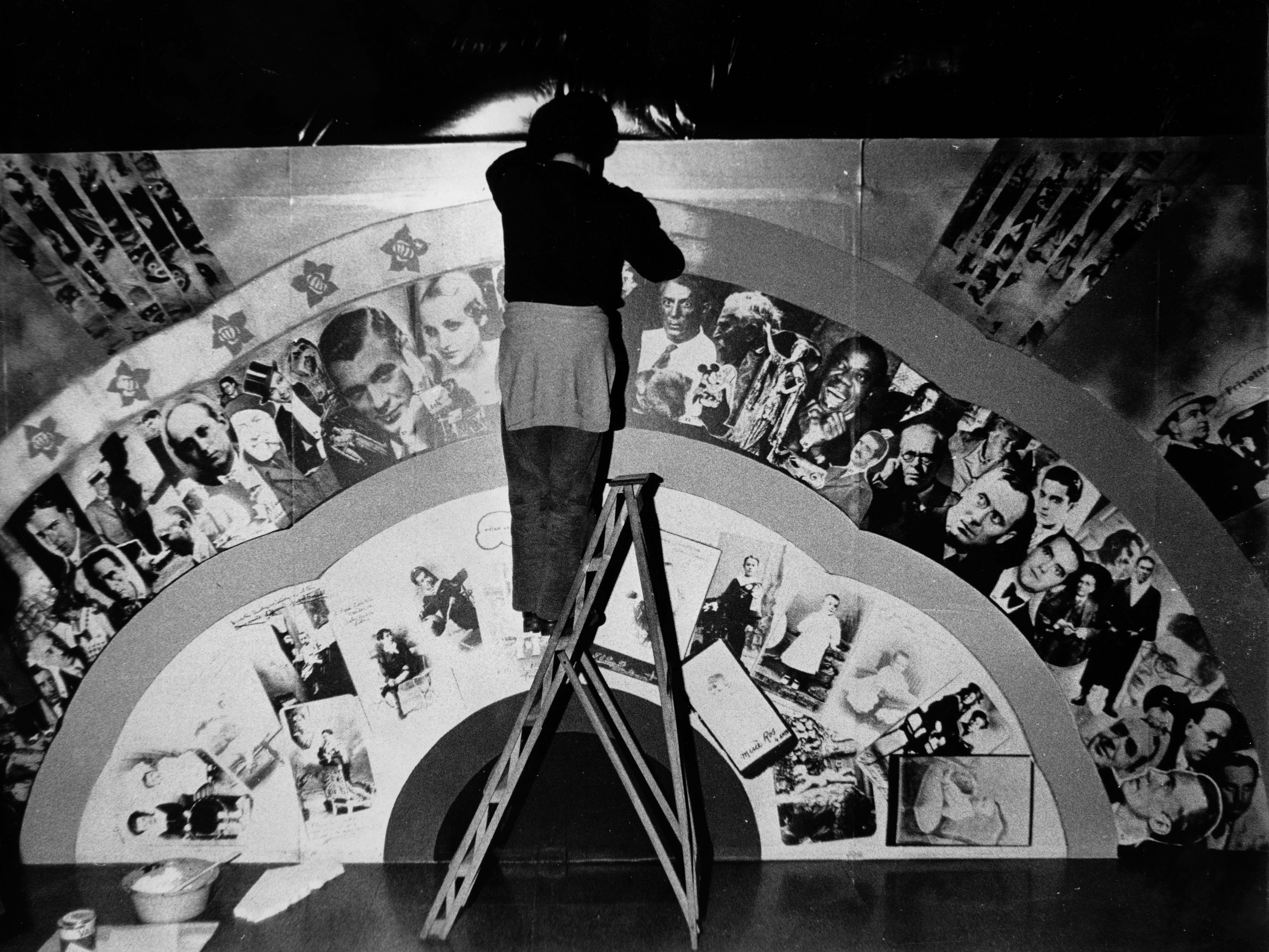
The mezzanine presented a faux labyrinth, representing an allegory of that time period. Despite the dead ends, the height of the walls made it possible to have a view over the entire space. Moreover, the panels had self-supporting lighting and photographic extensions of image and text collages. Designed one by one, with photographs from the Barcelona Historical and Newspaper Archive, the photographs featured a selection of political and social events, art exhibitions, concerts, film and theatre premieres, newspaper articles, and magazine advertisements from the era. These mixed images served to create an explicit jumble of images about censored political issues and events.
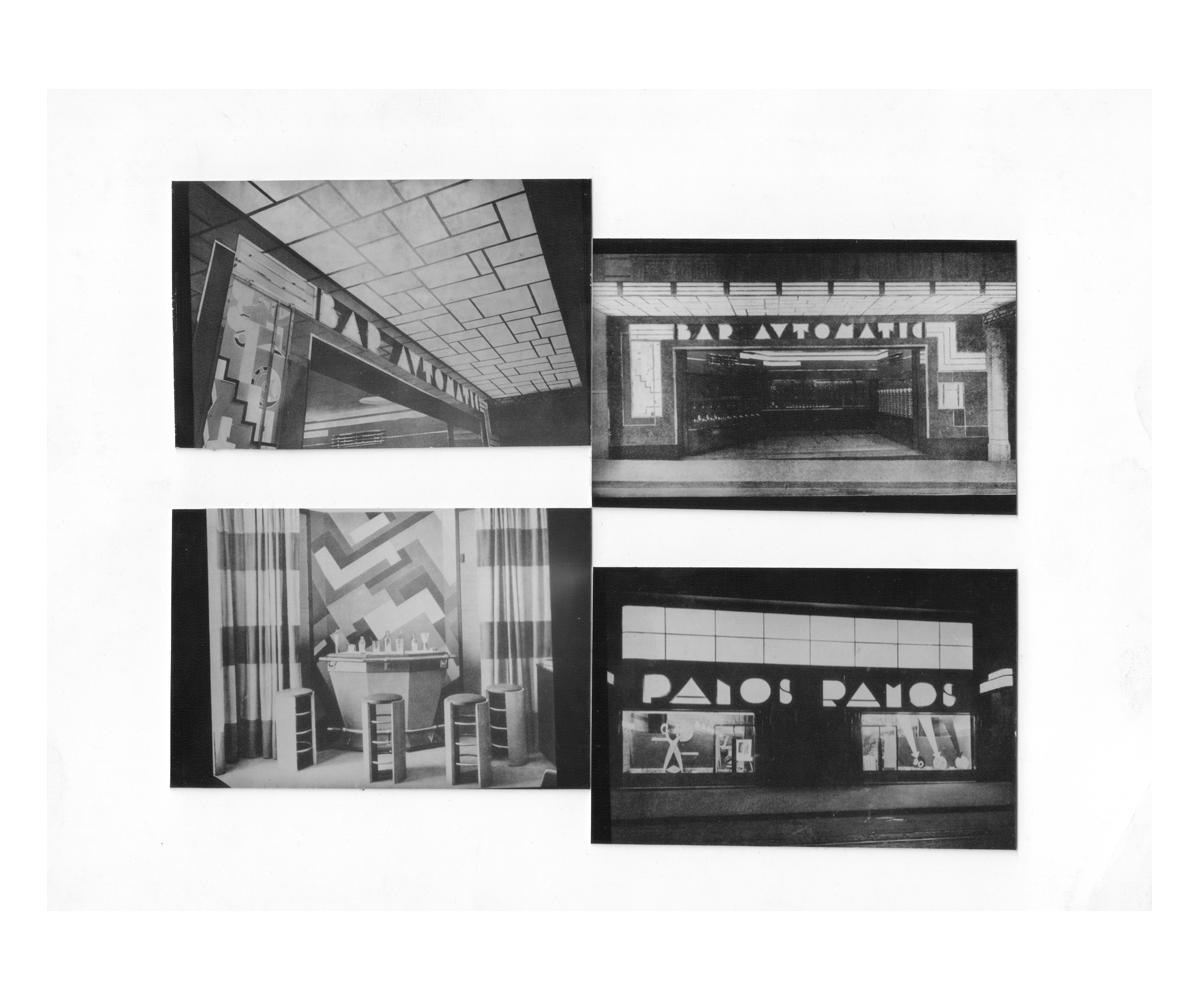
All the images in the exhibition were in black and white until visitors reached the central room, where original pieces by members of the ADLAN were exhibited in colour display cases decorated with satin fabric. All of the items were treated as if they were pieces in a museum.
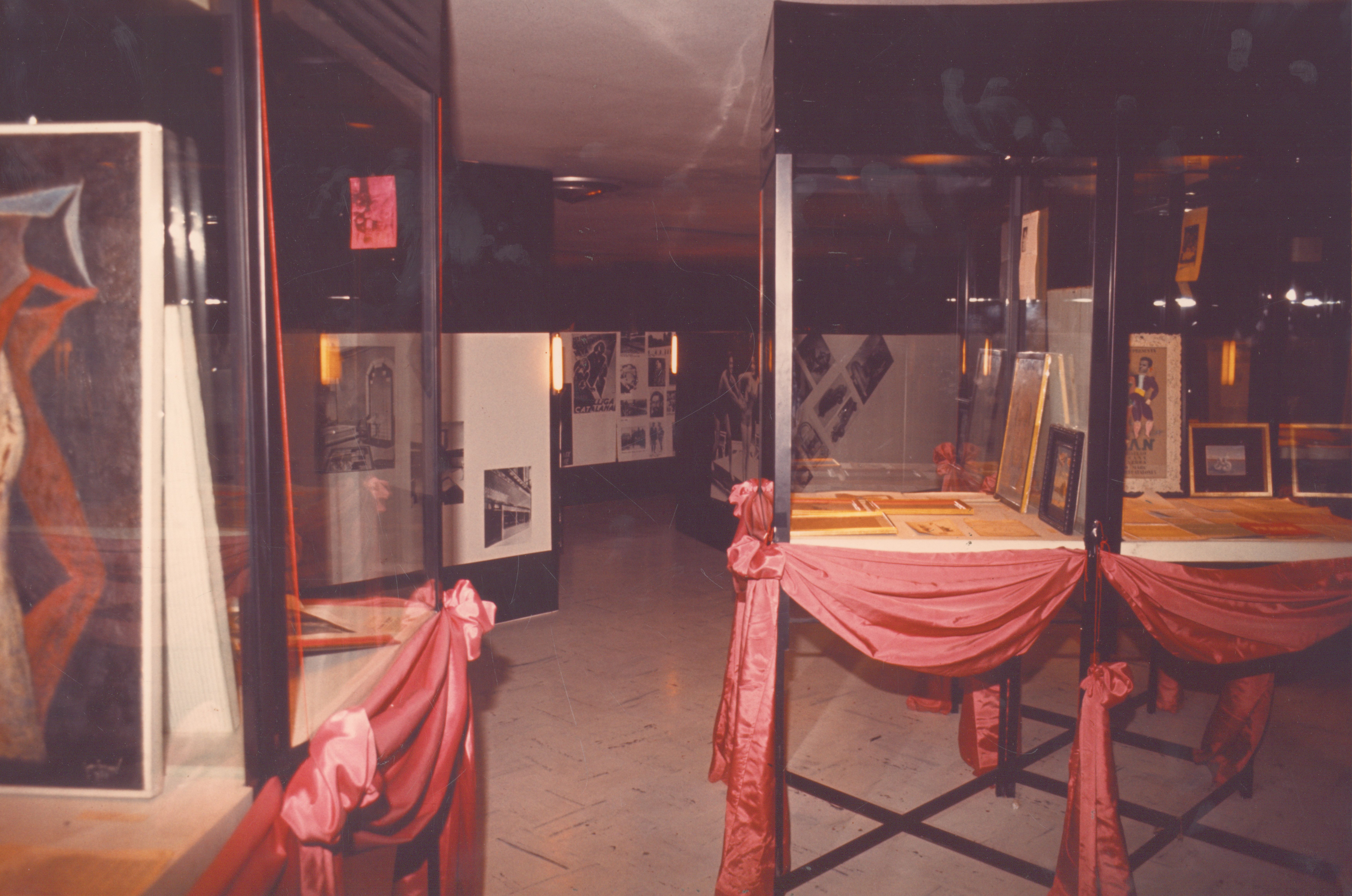
Among the original pieces on display were sculptures by Jaume Sans, Marinel·lo, and Eduald Serra, paintings by Joan Miró, a drawing of J.V. Foix by Man Ray, as well as works by other artists such as Cassanyes, Hans Arp, Arturo Carbonell, Kandinsky, Helion, Schoemberg, and Maruja Mallo, among others. The event also featured an important collection of documentation including magazines, exhibition catalogues, invitations to exhibitions, and courses, pamphlets, communications, and notices from the ADLAN, as well as letters, notes, posters, and congratulations from the group.
A selection of images was place around the display cases with what was considered "good design," both graphic and industrial, in architecture and for interiors.
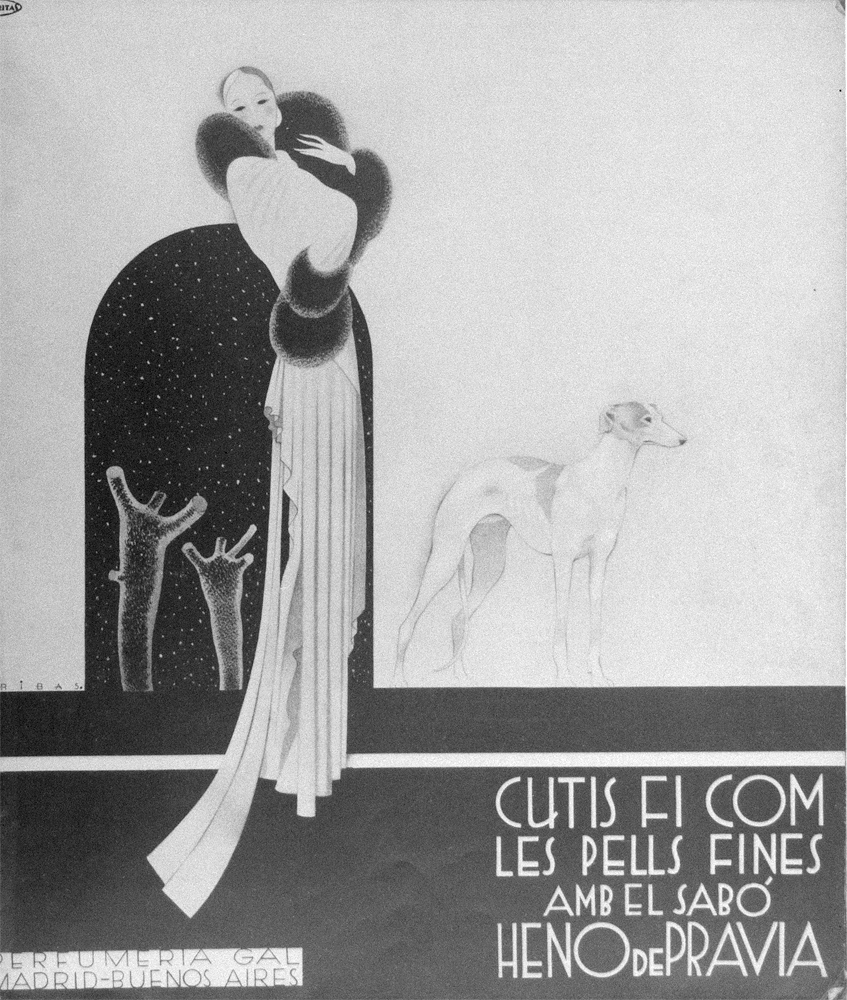
The staircase leading to the auditorium was a tribute to Hollywood, where anyone could become a celebrity, flanked on both sides by life-size photographs of the stars.
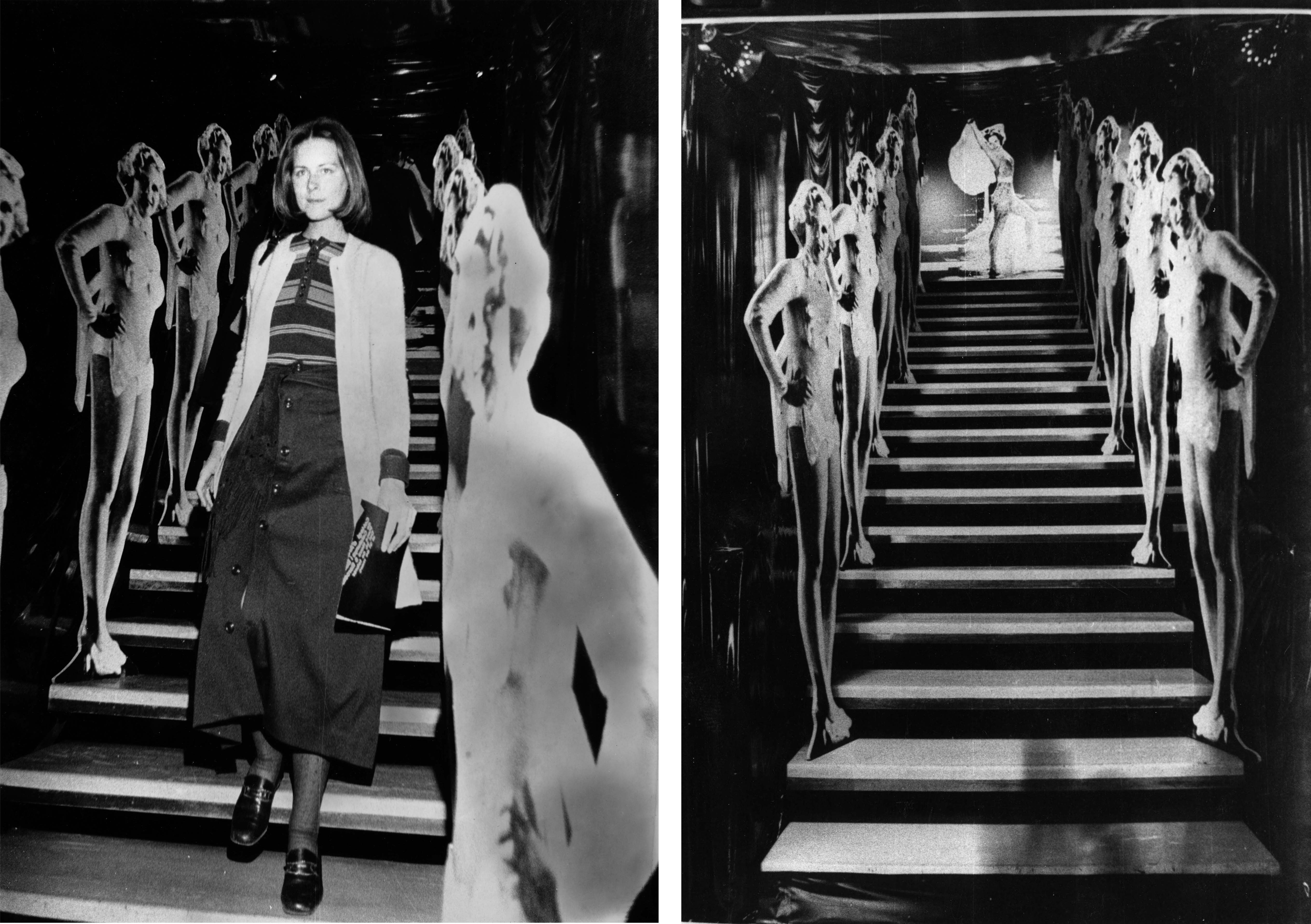
The tour ended on the first floor with an audiovisual screening featuring miscellaneous images and music from the era.

The special Christmas issue of the magazine D'ací i d'allà in 1934, coordinated by Josep Lluís Sert (GATPAC) and Joan Prats (ADLAN), was dedicated to the ADLAN's activities.
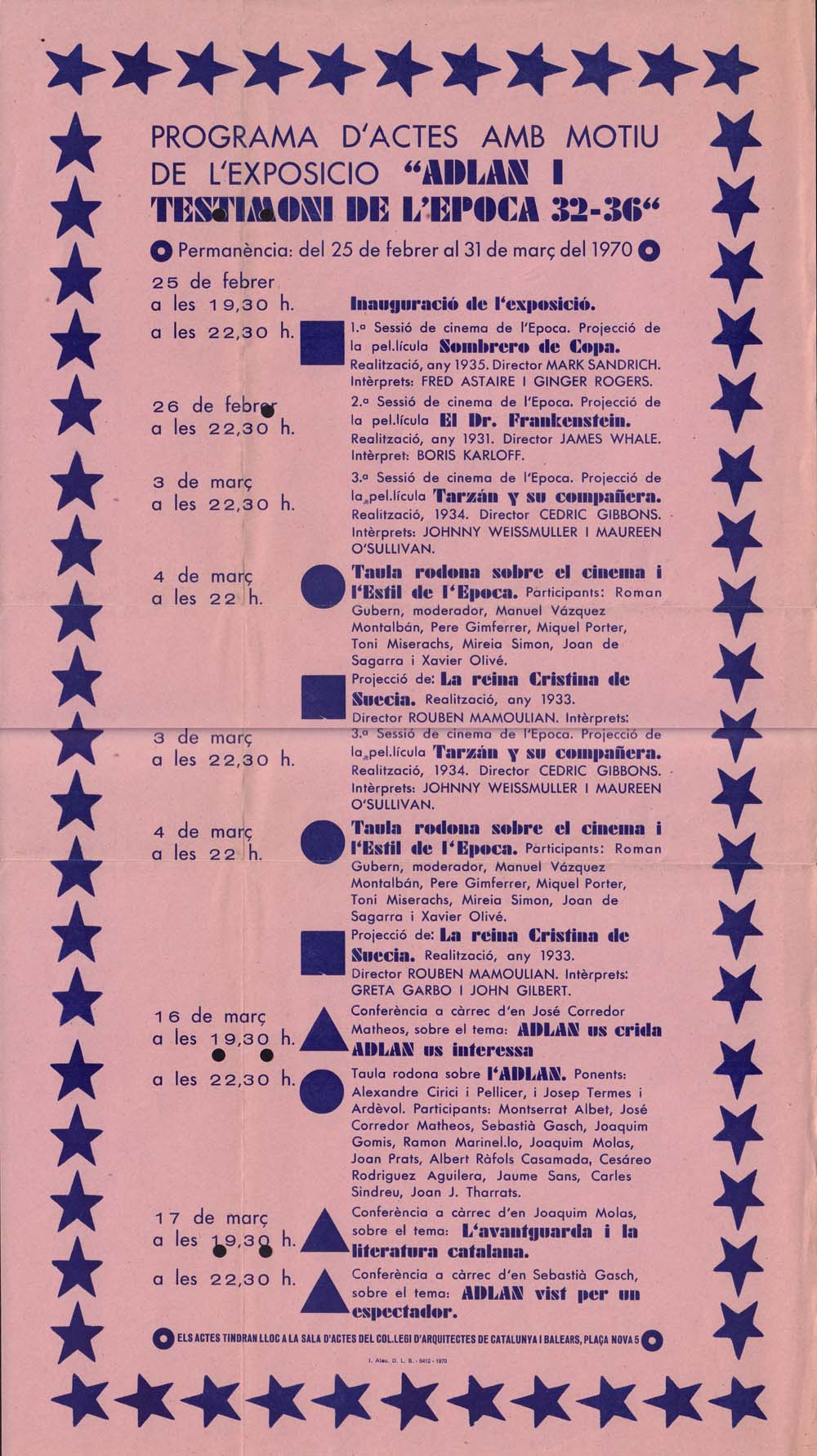 Programme of events on the occasion of the exhibition
Programme of events on the occasion of the exhibition
Exhibition credits
An EINA professor and students took part in the project and bringing the exhibition to life. The general themes for the project were discussed in the graphic, industrial, and interior design project classes, then developed through a small group of people who put it into practice, consisting of Mariona Aguirre, Anie Baurier, Joan Antoni Blanch, Álvaro Caballé, Merche Cisteró, Montse Coma, Isabel Cowell, Carme Farràs, Maria Girona, Tone Hoverstad, Paco Llobet, Ramon Manguillot, Toni Miserachs, Xavier Olivé, Pilar Rabassa, Albert Ràfols Casamada, Mireia Simon, Xavier Sust, Ramon Valverde, Eugènia Vidal, and Yves Zimmermann.
References
Rodríguez-Aguilera, Cesáreo. "Los amigos del arte nuevo". Arxiu d'EINA, Centre Universitari de Disseny i Art. ADLAN i testimoni de l'època, '32-36 (1969-1970), 1970.
Text by Xavier Olivé / Rubén Alcaraz
